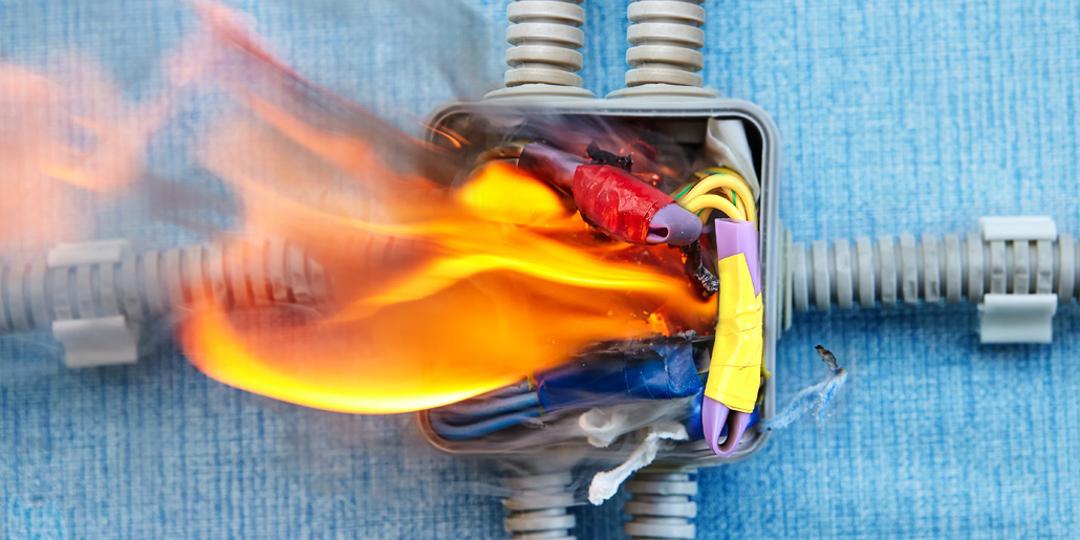Before attempting any kind of home DIY electrical work, you need to fully understand what to expect. According to the Electrical Safety Foundation International (ESFI), there are thousands of injuries sustained from electrical accidents every year in the United States alone. One of the most fundamental concepts to understand is the difference between a live wire and a neutral wire.
Basic Residential Electrical Service
In any junction box or outlet box in your home, you’ll find a rainbow of wires that power the various aspects of your appliances. This can prove to be pretty overwhelming.
In most modern construction, you’ll find a minimum of three types of wiring: live wires, neutral wires, and ground wires.
Live wires
Live wires carry the power from the source to a switch or appliance. These wires power the electrical demand or load at various locations throughout your home. These may be light switches, electrical outlets, or junction boxes for light fixtures.
The electrical source is ultimately the electrical panel in your home, and any live wire may connect directly to the circuit. It may also connect “upstream” to another switch or junction box.
Wherever it’s fed from, this live wire carries a high voltage, and is also called the “hot” wire.
Another fact to understand is that the live wire, or hot wire, is always carrying an electrical current as long as it’s connected to the power source.
Neutral wires
For the electrical distribution system to work in your home, the current has to complete a circuit. The neutral wire carries the electricity back to the power source.
It completes the circuit by directing the current to a ground or busbar, normally located at the electrical panel. Once the power is “used” at the demand point, it carries it back to the panel. This completes the circuit while providing a path to bleed off any excess current in the junctions or outlets.
The neutral wire carries an electrical current as long as it’s being used as the return source for the power. However, it’s best to be safe and assume that it is carrying a charge at all times.
Ground wires
While the neutral wire directs the current to a ground at the panel, the ground wire is extra protection. You may not find a ground wire in your junction boxes or outlets. They’re normally not found in older homes.
However, they perform an important job and are an excellent upgrade to any old electrical system.
The ground wire doesn’t normally carry any charge. However, if there is a short circuit, or if the wiring insulation is damaged, it will “ground” any unstable current to protect your electrical system.
Difference between neutral and ground wires
The difference between the neutral wire and the ground wire may seem confusing. However, the primary difference is that the neutral wire carries the current back to complete the circuit. The neutral wire is part of the live circuit and is required for the electrical system to function.
The neutral wire is connected to an earth ground. So, it may also divert unstable or excess current, as well as completing the circuit.
But the ground wire is specifically installed only to “ground,” or send to earth, any unstable or excess current.
Live Wire, Neutral Wire, and Ground Wire Color Coding
Systems for color coding wiring systems have not always been standard in the U.S., so it pays to use a tester before making any assumptions based on color.
However, manufacturers now comply with color standards in newer construction, and these codes should be observed in renovation or repair.
But, because electrocution can be fatal, it pays to assume that any wire in your electrical system is a live wire.
Generally, residential electrical wiring is color coded as followed:
-
White: Neutral, but will be hot when the circuit is complete
-
Black: Hot wire or Live Wire
-
Green (sometimes bare): Ground
Safety Considerations
When performing any electrical work on your home, it’s important to understand a few fundamental concepts about electricity.
The first is that electrical current will always seek to return to its source – this is what is meant by “completing a circuit.”
The second is that it will also follow the path of least resistance. But it will also use ANY path it can find available to return to its source.
Finally, if you’re not careful, your body may become a path by which it tries to complete the circuit. This is often fatal.
Don’t take chances with your life. For professional assistance in your electrical projects, make an appointment today with the team at Mr. Sparky in Pleasantville.
Our trained technicians will quickly and safely see to your electrical needs, whether you want to protect you home with a grounding upgrade or simply want to add extra outlets.















